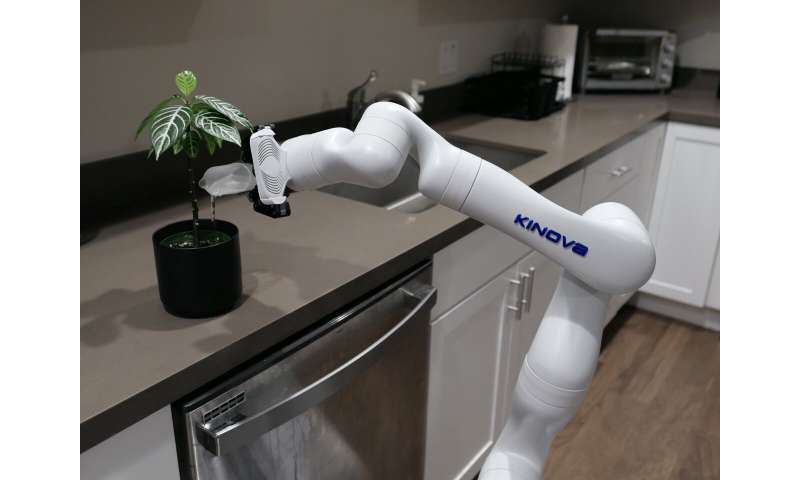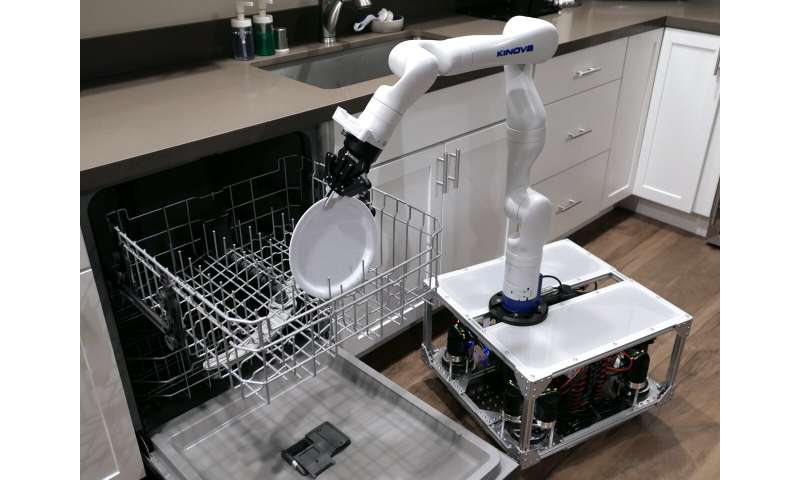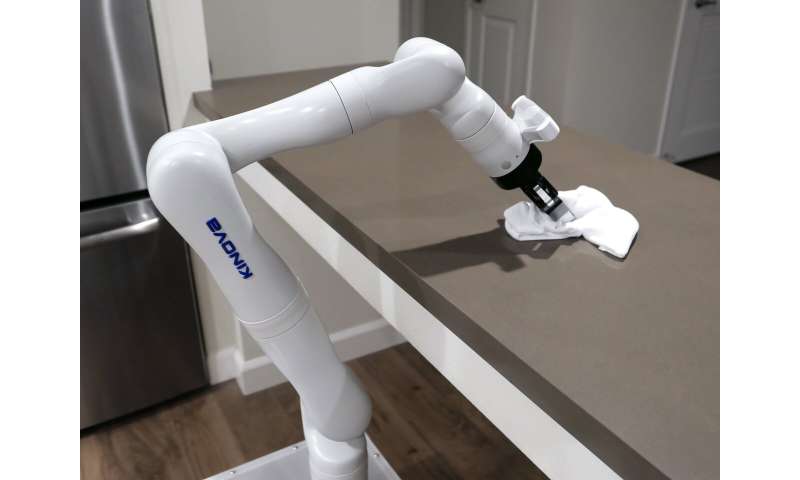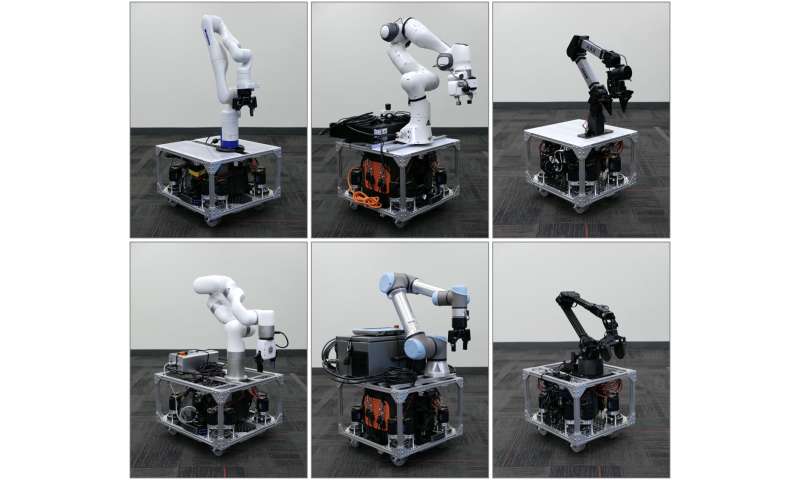Researchers at Stanford University, Princeton University, and Dexterity recently developed TidyBot++, a holonomic mobile robot that can perform various household chores and could help to train or test new algorithms for robotics applications.
This promising robotic platform was presented at the Conference on Robot Learning and outlined in a paper published on the arXiv preprint server.
“Our paper was inspired by the growing need for scalable data collection in robotics, particularly in the area of mobile manipulation,” Jeannette Bohg, supervising author of the paper, told Tech Xplore.
“While imitation learning has shown promising results, its success heavily depends on the availability of real-world demonstrations, which are difficult to acquire due to the lack of suitable, accessible research platforms. We noticed a gap in the availability of open-source, flexible, and cost-effective hardware for mobile manipulation in household settings, which are a primary focus of many robotics applications.”
The main objective of the recent study by Bohg and her colleagues was to contribute to the advancement of robotics research, by developing a new robotic platform that is well-suited for tackling household tasks and could also be used to collect training data for imitation learning algorithms. To promote its wide adoption within the robotics community, this platform was designed to be easily accessible, robust, and versatile.
“TidyBot++ is a mobile robot designed to perform household tasks with precision and ease,” explained Jimmy Wu, first author of the paper.
“At its core, it has a holonomic base equipped with motorized caster wheels that allow it to move freely in any direction—forward, backward, sideways, or rotating—without the constraints found in traditional robot bases like differential drive systems. This enhanced maneuverability simplifies the robot’s movements and makes tasks like repositioning in tight spaces much more efficient.”
The TidyBot++ robot has three primary components. The first is a modular frame made of aluminum T-slot extrusions, which is easy to build and can be customized by adding various robotic arms or sensors.
The aluminum frame has integrated motorized caster wheels that have a small ‘caster offset’. These wheels enable simultaneous control of all the planar degrees of freedom, essentially allowing the robot to roll around just like a motorized office chair would.
The robot’s third component consists of a mobile phone teleoperation interface that leverages the WebXR API for real-time pose tracking. Using this interface, users can intuitively control the robot’s movements simply by moving their phone.
“Compared to other platforms, TidyBot++ is highly maneuverable, accessible, and optimized for learning household tasks,” said Bohg. “Its holonomic base ensures efficiency and smooth operation, even in cluttered environments.”
-

Credit: Jimmy Wu.
-

Credit: Jimmy Wu.
Compared to other advanced robotic platforms, TidyBot++ is relatively low-cost, as fabricating it costs between $5,000–$6,000. Its main structure can be easily customized by adding specific robotic arms and sensors, which facilitates its use for research.
To test their robot’s potential, Bohg and her colleagues have already carried out various real-world experiments. Their findings were very promising, as they showed that by running policies trained on a few demonstrations, TidyBot++ could complete various household tasks with high success rates, including opening a fridge, wiping a countertop, and loading a dishwasher.
“We showed that the holonomic base significantly outperformed nonholonomic designs in efficiency, task success rates, and ease of teleoperation,” said Wu. “By making the design and software fully open-source, we aim to democratize access to a robust mobile manipulator, enabling researchers worldwide to advance mobile manipulation research.”
In the future, the robot developed by this team of researchers could help to collect high-quality data to train AI algorithms for robotics via imitation learning. TidyBot++ could also be introduced in educational settings as a platform to test these algorithms and could eventually be deployed in household settings, where it could assist users with household chores.
“In our next studies, we plan to expand the capabilities of TidyBot++, for instance, by integrating advanced sensors and multiple arms to expand the range of household tasks it can perform,” said Bohg. “We also plan to develop more intuitive interfaces and automation features to collect large-scale datasets for learning complex manipulation policies.”
-

Credit: Jimmy Wu.
-

Credit: Jimmy Wu.
To facilitate the widespread use of their robot, the researchers are now trying to improve its design, by addressing some of its limitations, such as its back drivability (i.e., currently, it is difficult to move the robot using external force). In addition, they would like to carry out tests investigating whether the robot could easily coordinate with other robots, to tackle missions that would be more efficiently completed by a team of robots.
“In the future, we will also investigate ways to train policies that generalize across a variety of environments and tasks with minimal additional training,” added Wu.
“By continuing to refine TidyBot++, we aim to push the boundaries of what mobile manipulators can achieve and contribute to making robotic assistance more accessible and impactful in everyday life.”
More information:
Jimmy Wu et al, TidyBot++: An Open-Source Holonomic Mobile Manipulator for Robot Learning, arXiv (2024). DOI: 10.48550/arxiv.2412.10447
© 2025 Science X Network
Citation:
Open-source holonomic mobile manipulator could advance household robotics (2025, January 9)
retrieved 9 January 2025
from https://techxplore.com/news/2025-01-source-holonomic-mobile-advance-household.html
This document is subject to copyright. Apart from any fair dealing for the purpose of private study or research, no
part may be reproduced without the written permission. The content is provided for information purposes only.

